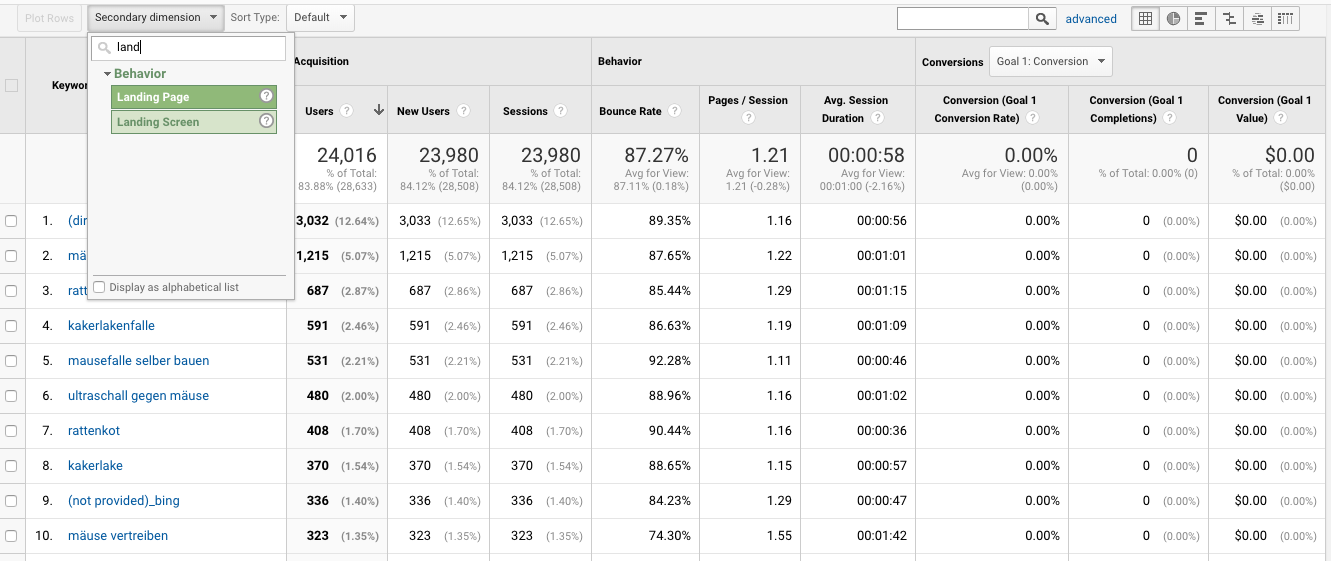Open Advanced Insights with Google Analytics Secondary Dimension Tools
Open Advanced Insights with Google Analytics Secondary Dimension Tools
Blog Article
Opening the Power of Additional Measurement Analytics for Improved Information Insights and Decision-Making
In the realm of data analytics, main dimensions commonly take the limelight, yet truth deepness of insights lies within the world of additional dimensions. These additional information points provide a nuanced viewpoint that can light up patterns and relationships not conveniently apparent at very first glimpse. By using the power of secondary dimension analytics, organizations can reveal covert patterns, uncover connections, and essence a lot more purposeful conclusions from their information. The capacity for boosted decision-making via the use of these additional measurements is huge, guaranteeing a deeper understanding of complex information collections and leading the way for more informed tactical choices.
Significance of Secondary Measurements
Discovering the relevance of second dimensions in analytics introduces the hidden layers of data understandings important for educated decision-making in various domains. Additional dimensions supply a much deeper understanding of key data by offering extra context and viewpoints. By including second dimensions right into analytics, organizations can remove much more nuanced and detailed understandings from their datasets.
One key significance of second dimensions is their ability to section and categorize main data, enabling a much more thorough analysis of certain parts within a dataset. When looking at the data as a whole, this division makes it possible for businesses to identify patterns, fads, and outliers that could not be obvious. Furthermore, additional dimensions assist in revealing relationships and dependences between various variables, bring about even more accurate projecting and predictive modeling.
In addition, additional measurements play a vital function in improving data visualization and reporting. By including second dimensions to visualizations, such as charts or charts, experts can create more informative and informative depictions of information, facilitating much better interaction of searchings for to stakeholders. In general, the assimilation of secondary measurements in analytics contributes in unlocking the full potential of data and driving evidence-based decision-making.
Key Advantages of Making Use Of Secondary Dimensions
Making use of secondary dimensions in analytics supplies companies a calculated advantage by boosting the deepness and granularity of information understandings. One vital benefit of integrating second dimensions is the capacity to section and filter data, allowing for a more thorough evaluation of details aspects within a dataset. This segmentation allows companies to gain a more nuanced understanding of their target market, performance metrics, and various other crucial information factors. By dissecting information using secondary dimensions such as time, place, device kind, or user demographics, organizations can uncover patterns, fads, and relationships that might or else stay surprise.
Moreover, the utilization of second dimensions enhances the context in which primary Click This Link data is analyzed. By leveraging additional measurements in analytics, organizations can harness the full potential of their data to drive much better decision-making and attain their business purposes.
Advanced Information Evaluation Methods
A deep study innovative data evaluation techniques exposes advanced methods for removing beneficial understandings from intricate datasets. One such technique is device knowing, where formulas are utilized to determine patterns within information, forecast end results, and make data-driven decisions. This technique permits for the automation of logical model building, allowing the processing of large volumes of information at a quicker rate than traditional approaches.
Another innovative method is anticipating analytics, which makes use of statistical algorithms and machine learning techniques to anticipate future results based upon historical data. By examining patterns and trends, services can expect customer behavior, market patterns, and potential threats, equipping them to make aggressive decisions.
In addition, message mining and belief evaluation are important methods for extracting understandings from unstructured data resources such as social media remarks, consumer testimonials, and study actions. By evaluating message information, organizations can comprehend client viewpoints, recognize emerging patterns, and improve their solutions or items based on comments.
Enhancing Decision-Making Through Second Measurements

Enhancing decision-making through second dimensions enables organizations to make more educated and targeted calculated choices. For instance, by segmenting customer data based upon second dimensions like buying history or engagement levels, companies can customize their advertising strategies to details target market sections, resulting in enhanced conversion rates and client complete satisfaction. Secondary measurements can assist determine relationships and connections in between different variables, allowing organizations to make data-driven decisions that drive development and profitability.
Applying Second Dimension Analytics
When including additional dimensions in analytics, organizations can unlock deeper understandings that drive calculated decision-making and improve overall performance. This entails recognizing the certain inquiries the company looks for to respond to and the data factors required to resolve them.

Furthermore, organizations need to take advantage of advanced analytics devices and modern technologies to improve the process of including second dimensions. These devices can automate information processing, evaluation, and visualization, permitting companies to concentrate on translating understandings instead of manual information manipulation.
Conclusion
In final thought, additional measurement analytics play a critical duty in boosting information understandings and decision-making procedures. By utilizing advanced information evaluation strategies and carrying out second measurements properly, organizations can unlock the power their website of their data to drive tactical organization choices.
In the realm of information analytics, main measurements often take the limelight, yet the true depth of insights exists within the world of secondary measurements.Using additional dimensions in analytics uses companies a strategic advantage by enhancing the depth and granularity of information insights. By leveraging additional dimensions in analytics, companies can harness the complete capacity of their data to drive much better decision-making and accomplish their company purposes.
Applying data validation procedures and normal audits can help preserve data quality and reliability.
By making use of innovative data evaluation strategies and implementing secondary dimensions efficiently, organizations can open the power of their information to drive critical organization choices.
Report this page